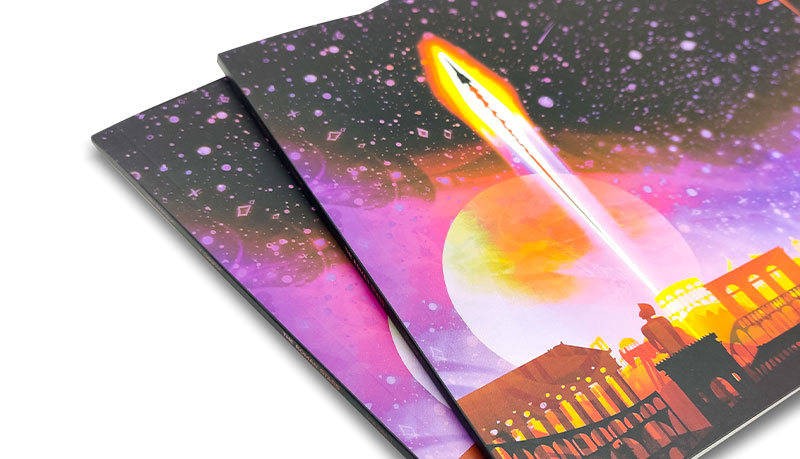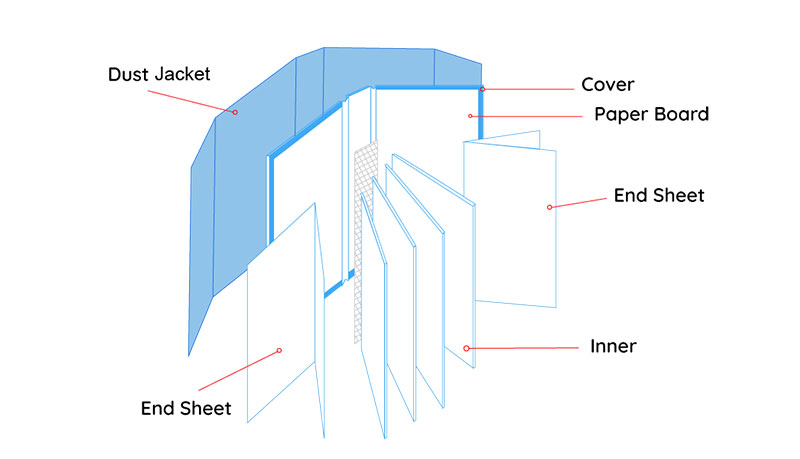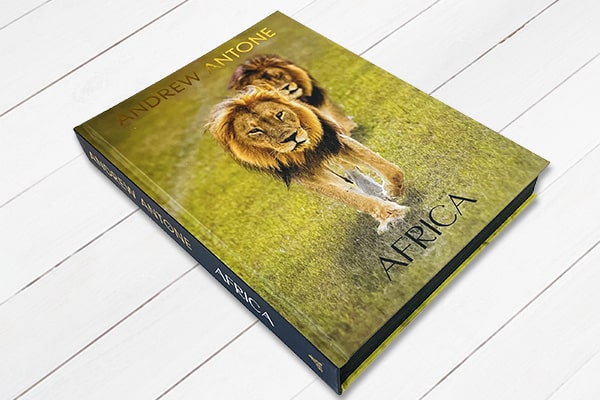As one of the world's foremost independent offset printers, we share our complete and comprehensive guide to choosing between hardcover and softcover books from the viewpoint of both readers, publishers, and independent authors.

The question, “What are the differences between hardcover and softcover books?” is one that we get asked a lot. It's clearly a topic that both readers, mainstream publishers, and independent authors alike think about and want answered. But the question can be more nuanced than it seems at first. You see, the perspective is slightly different depending on whether you're a publisher, a self-publisher, or a reader. Still, it's helpful to all parties to know and understand better what this question means to the others as this is the key to a full and helpful understanding of the issues. Publishers and self-publishers need to understand how readers think about this issue so they can better serve their customers' needs. And readers need to understand how publishers and indie authors approach the issue when choosing between hardcovers and softcovers or paperback in order to understand why they do things the way they do.
Let's also clear up one common point of misunderstanding at the outset. There's no difference between a hardcover and a hardback. And a softcover and a paperback are also the same. It may be that hardcover and softcover are more common terms in the US and hardback and paperback are more common in the UK. Still, the words refer to the same things. The essential difference is this:
- Hardcovers/hardbacks are books bound in stiff, card-based covers
- Softcovers/paperbacks are books bound in flexible, paper covers
If the difference ended there, however, our job would be done. But it's quite a bit more complex than that. Ready? Let's dive in a little deeper.
5 differences between hardcover and softcover books
We should acknowledge that there are many facets to this business of the difference between hardcover and softcover books. To get a thorough understanding, we'll need to think about them all. The facets are these:
- The physical differences
- The differences in manufacturing
- The history and purpose of the formats
- The relationship of each format to sales and marketing
- The reader's experience
But let's start with the publishers. For our purposes, it may be useful to split publishers into two groups: traditional publishers and self-publishers or indie authors. There's an overlap between them in many areas, but self-publishers — at least those just starting out — tend to favor softback/trade paperback print editions and fewer publish as many hardbacks as the traditional publishing houses. More experienced and successful indie authors tend toward adding traditionally printed hardcovers to their lists. For example, the famous indie author and industry leader, Joanna Penn recently published her book of memoirs, Pilgrimage, in cloth bound hardcovers with elegant silver foil stamping and a dust jacket with soft-touch lamination. She explained her decision to go this route in terms of the value – both aesthetic and economic – that it adds to the book. If, like Joanna, you have a strong responsive mailing list, you can make more money on hardback sales than you ever will on softcovers and ebooks only.
Why do books come out in hardcover first?

Traditional publishers — and increasingly successful self-publishers—often release hardcover books before distributing the paperback edition. There are several reasons why this is, but the main one comes down to simple economics. Book publishing — especially in the digital age when there's so much competition from other forms of entertainment and other ways of accessing information — is an expensive business.
While publishers undoubtedly love books and care about literature, they're businesses first and foremost. They need to make their money back after investing in paying an advance to the author along with legal fees, editing, proofreading, design, printing, marketing, and distribution. Hardcover books cost more to produce than paperbacks, but not so much more; whereas they sell for a lot more.
And the public doesn't mind buying them. Just like an eagerly anticipated movie that goes out on theater release for several months before it comes out on DVD or moves to the streaming services; so, with books. The hardcover is the edition which makes the biggest stir, attracting reviews and making the first sales. A hardcover book doesn't cost twice as much as a paperback to print, but because of its size and perceived value, it can be sold at twice the price.
This idea of ‘perceived value' is worth looking at again. Any object has an inherent value — meaning the basic attributes of its materials and manufacture. But then it may also have a ‘perceived value'. This is a cultural, artistic, or emotional value given to the object by people who interact with it. Hardcover books have higher cultural cache than paperbacks. They're weightier, more attractive to see and hold, and look more impressive on bookshelves either in the store or at home.
So, mainstream publishers — and top-level self-publishers — release hardcovers before the paperback edition for the following reasons:
- To create a publicity splash
- To sell at a higher profit to true fans and early adopters
- To create prestige for the release of a new book
- To attract professional reviews
It's only once the sales start to wane that mainstream publishers release the softcover edition of a book. They'll make less profit per-unit-sale of the paperback, but on the back of the publicity and reviews the hardback gained, they'll see a spike in sales to those who didn't want to pay out the higher price for the hardcover.
Then, of course, certain books are only ever published as hardcovers. Think of the so-called ‘coffee table' books, photographic collections, art books, and so on. But such books usually cater to a more niche market and carry a commensurate price tag.
Self-publishing: hardcover or softcover?
Most self-publishers these days — although not all — start out with one of the well-known eBook, POD (print-on-demand), and distribution services such as Kindle Direct Publishing, Draft2Digital, or Ingram Spark. These platforms allow you to upload your book and publish it and distribute it as an eBook or a trade paperback through online stores, including Amazon, Barnes & Noble, Waterstones, and more.
It's not a bad way to get started while you ‘find your feet' as an ‘authorpreneur'. Your eBooks go straight into the store and customers download them to their devices automatically on payment. The paperback copies get printed one by one as customers order them. Your only job needs to invest time and money in marketing and promotion.
Most self-publishers — and this is true for mainstream published authors, too — don't see much success. Certainly not with their first book. For that reason, it's wise not to risk too high a financial investment while you're ‘cutting your teeth'. Like any business, self-publishing has a learning curve and it can take several years to see significant gains or earn a reasonable income. But plenty of hardworking, smart writers do it. And many of them choose to publish hardcover books, too, at that stage.
You might wonder why. The answer is simple: they do it for the same reasons that the traditional publishing houses do. Once, as a self-published author, you've established a dedicated fan base eager to buy your next book, you've built a large and responsive email list to whom you can make direct sales, and you have enough profits to reinvest in your business to take it to the next level, then publishing in hardback makes perfect sense. It can boost your credibility as an author and expand your profit margin.
So, whether you're a traditional publisher or a self-publisher, issuing a hardback book as well as a softback book — and in special cases only a hardcover edition — can make good sense both in terms of building your brand and reputation, marketing and promotion, and increased profits. People tend to buy hardcover books from authors they already know and trust. Readers keep hardcovers on their shelves at home, whereas a softcover may be passed on, resold, or even, eventually, thrown away. So, what are the advantages and disadvantages of hardcovers and softcovers from the reader's point of view?

Paperback Book Printed by QinPrinting
The differences between hardcover and softcover books: the reader's perspective
Many readers these days have electronic reading devices like the Kindle, Nook, Kobo, or just an application on their smartphone. For reading ‘on the go' or trying out a new author or genre without spending too much, eBooks can be a great option. But despite the original outcry from the literary community and the predictions of the end of the printed word, hardcover and paperback books are as popular as ever. Many readers prefer the physicality of a paper book to an electronic device. This is especially true if they work in front of a computer screen all day. The last thing they want in their leisure periods is even more screen time!
Which is better, hardback or paperback?
But what are the differences between hardcover and softcover books for the reader, and which is better? The answer to that depends very much on what kind of reader you are. You may read only fiction and purely for entertainment — picking up a thriller or a romance at the airport, drugstore, or supermarket, for example — and in that case, the bulk and expense of a hardcover, for a book that you'll read once and never again, may not make sense. Better to pick up a paperback.
Maybe you're the sort of reader who doesn't just enjoy the experience of reading for escapism, but reads widely. Perhaps you enjoy history, science, biography, arts, and literary fiction, too. In that case, you're likely to buy some books which are only issued in hardcover, and others because they're particularly fine editions or collections of short stories and essays that you'll revisit many times. You're likely to have a small personal library of books that you treasure at home. So, in that case, books that you want to last, you'll get in hardcover, but others which you don't want to keep, you may pick up in the paperback edition.
Hardcover vs. paperback price
There's also the question of budget. Let's face it, these days when your average hardback book costs about $30 a pop, and even an airport paperback will set you back up to $18, it's not everyone can afford to build up a personal library! Some paperback editions can be as cheap as $10, and for those on a tight budget, that's always going to be the go-to option. Either that, or check out at the public library.
Which brings us to libraries. If you're a keen reader, a student, or a supporter of public services, you'll have noticed that most library books are hardcovers. Why is that? It's because — while libraries in the US spend $14 billion a year on goods and services of which $1.22 billion a year goes on on new hardcover books — each individual buyer has a limited budget to work with and needs to make sure that the books they invest in are going to last. And because of the materials and the way they're manufactured, hardcovers are more durable and long-lasting than softcovers.
Which brings us neatly to one of the most important factors about the difference between hardcover and softcover books, which underpins many of these other considerations: what they're made of and how.
The material difference between hardcover and softcover books
Once of the fundamental differences between hardcover and softcover books is what they're made of and how they're made. This is important from a publisher's point of view because it has implications for the price and the product. Likewise for the reader. It's also why hardcover books are more durable and often more beautiful.
How are hardback books made?
Hardback or hardcover books are made using a process called ‘case binding‘. Case binding is the oldest and most traditional method by which hardback books are produced. Here's a summary of the main aspects of the process:
- The artwork for the cover is printed on high-quality paper, cut to size and shape, and then glued around the casing, which is made from stiff, gray card
- The inside pages are put together — either sewn or glued — in parts called ‘signatures' and then fixed to the interior of a ‘case' with glued ‘end papers'
- Final details such as a decorative head and tail band, a marker ribbon, or other features are added
The result is a robust, sturdy, aesthetically pleasing book which will last for decades or even centuries if cared for properly. The process, as we'll see, is a little more complex and involved than making a paperback book, but not so much more expensive. That's one reason why publishers and self-publishers are able to make a good return on their investment in printing hardcover books.

How are softcover books made?
Paperback books are made in a very similar way. The key difference from a hardcover is that they are rarely sewn together (stitching is tougher and more secure and stops the pages falling out over time) but glued. And, of course, there's no rigid ‘casing'. The cover is just a folded sheet of slightly thicker paper. For this reason, paperbacks are cheaper to produce and lighter in the hand, but they don't last as long and often aren't as pleasing to the eye.


So, is it worth buying hardcover books?
A vexed question that often comes up in reader forums is whether it's really worth the expense to buy hardcover books or if a paperback is always the best option; or even if in the digital age, eBooks are all you need. Well, book sales statistics answer that last question. According to Publisher's Weekly, print book sales are rising year-on-year in the US — a 2.9% increase in 2020 over 2019, and a whopping 8.9% in 2021 over 2020. The figures look set to rise going forward. So, while eBooks have their place, they won't be putting traditional publishers or printers out of business any time soon!
How do I choose between hardcover and paperback?
So, to decide if it's worth you buying a hardback rather than a paperback, you need to answer the following questions:
- Do you want to keep the book for a long time or just read it once?
- Are you interested in the book as an artistic object or only the words it contains?
- Have you got a healthy budget for book buying?
- Do you have a place at home to store books safely?
If you answered yes to all or most of these questions, then a hardback edition may be the best option for you. If you answered no to most of the questions, then paperback is likely to be the way to go. Of course, many keen readers buy a hardback edition to keep on display at home and a paperback to carry about and read on the move. In the end, the choice is yours.
Hardcover or softcover?
Now you should have a good idea of the differences between hardcover and softcover books from the perspectives of both the publisher and reader. Here's a quick summary for you:
Principal features of hardcover books
- Hardcover books are made with rigid casing, often stitched binding, and added features such as marker ribbons and dust jackets
- Hardcover books are aesthetically pleasing, robust, and long lasting
- Hardcover books are relatively expensive to make and cost more to buy
- Hardcover books have a high perceived value and are good for marketing and promotion
- Hard cover books get more attention from mainstream reviewers and the press
Principal features of softback books
- Paperback or softback books are less robust and durable
- As they are made of fairly lightweight paper stock with a paper cover, they are lighter, easy to carry around, and cheaper to send in the mail
- Paperbacks are cheap to produce and distribute and can even be printed singly, on demand with some services
- Paperbacks are glued together and their pages tend to loosen and fall out over time
Now you can answer the question what's the difference between hardcover and softcover books. You can decide which is best for you; whether you're a publisher, a self-publisher, a reader, a librarian, or a book collector. In most cases, a mix of hardcovers and softcovers is the best way forward, depending on your needs. Either way, we wish you happy reading and publishing!
If you're a small press, an independent author, or a publishing house wanting to print a high-quality hardcover or softcover book — and only the finest product and unbeatable customer service will do — we should talk. When it comes to printing your books, we have the expertise, the technical know-how, and the commitment to every customer that has led to and sustained our unrivaled global reputation as one of the finest independent offset printers anywhere in the world. Just shoot us an email to [email protected] or just call us on +1 951 866 3971 and one of our expert team members will be delighted to help and answer all your questions.









